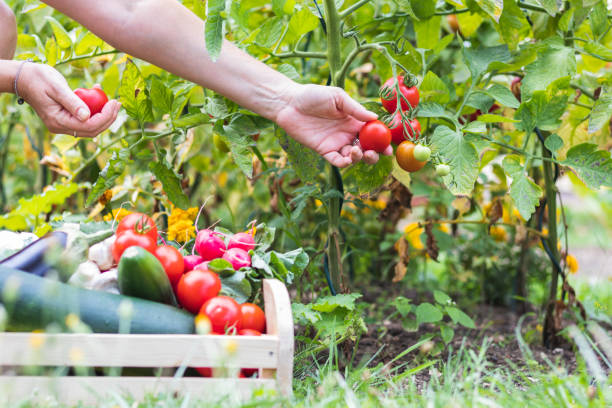It is easy to not think about what we cannot immediately see with our own eyes. Testing
soil in the garden and the landscape can help answer several questions why gardens thrive or
struggle each growing season. Now is the time to consider soil testing to prepare the garden and
the landscape for the growing season once the ground thaws out to collect soil samples.
Properly taken soil tests can help gardeners understand the nutrient levels in the garden,
and which nutrients need to be amended for the plant material and garden crops that have been or
will be planted in the future.
The major nutrients that impact plant growth and development; nitrogen, phosphorus, and
potassium, will be recorded on the basic soil test results. Once gardeners receive this
information, they can make informed decisions on how much nutrients need to be applied for the
growing season, depending on the plants in the landscape or the garden.
Another item that needs to be tested for gardens and landscapes in western Nebraska is
the soil pH. Soil pH indicates how acidic or alkaline the soil is. In most cases, landscape and
garden soil pH levels here are alkaline, often high enough to not allow plant roots to absorb iron,
copper, and other micronutrients that are present in the soil.
Left untreated, many landscape and garden plants in alkaline soils will not properly
develop, exhibit diminished quality, and many times die from the nutrient deficiencies. Plant pH
preference greatly varies, prompting gardeners to select plant material that can adapt to the pH levels in this part of Nebraska, or make the needed soil amendments to allow plants to grow to
their full potential.
Here are some simple tips that help gardeners take soil test samples and learn how to
receive assistance on recommendations for individual garden and landscape situations.
*First, find a clean plastic bucket to collect the soil that will be used for the sample that
will be tested. Metal buckets may alter the true results of the soil test on accident.
* Second, select the area that needs to be tested. This can be a specific area of a garden,
a flower bed, section of the lawn, or an area around tree and shrub plantings.
* Third, find a clean spade with all foreign matter removed from the blade to collect
samples. Soil testing probes can also be checked out from the local University of
Nebraska-Lincoln Extension Office as well.
* Fourth, collect soil samples that are eight to 12 inches deep and 1 1/2 inches wide, using
the spade or soil testing probe from 12 random places in the area that is going to be
tested, and place in the clean bucket.
* Fifth, thoroughly mix all the soil samples together as much as possible. Fill a re-
sealable sandwich bag or a soil testing bag with the thoroughly mixed soil.
* Six, label the bag with your name, address, and indicate whether the soil came from a
garden, lawn, flower bed, tree planting area, or other location.
* Seventh, contact your local University of Nebraska-Lincoln Extension Office to
discuss which soil tests are appropriate for the individual gardening or landscaping
situation. The staff will be able to show which soil testing labs are available to
handle and calculate the soil test results.
As soon as the soil tests return, schedule time with a University of Nebraska-Lincoln Extension educator to review the test results and receive recommendations for the growing needs of the garden or landscape.
If you have any questions about garden and landscape soil testing, please contact me at
dlott2@unl.edu, by calling (308) 532-2683, or by contact your local University of Nebraska-
Lincoln Extension Office. Have a great week!






